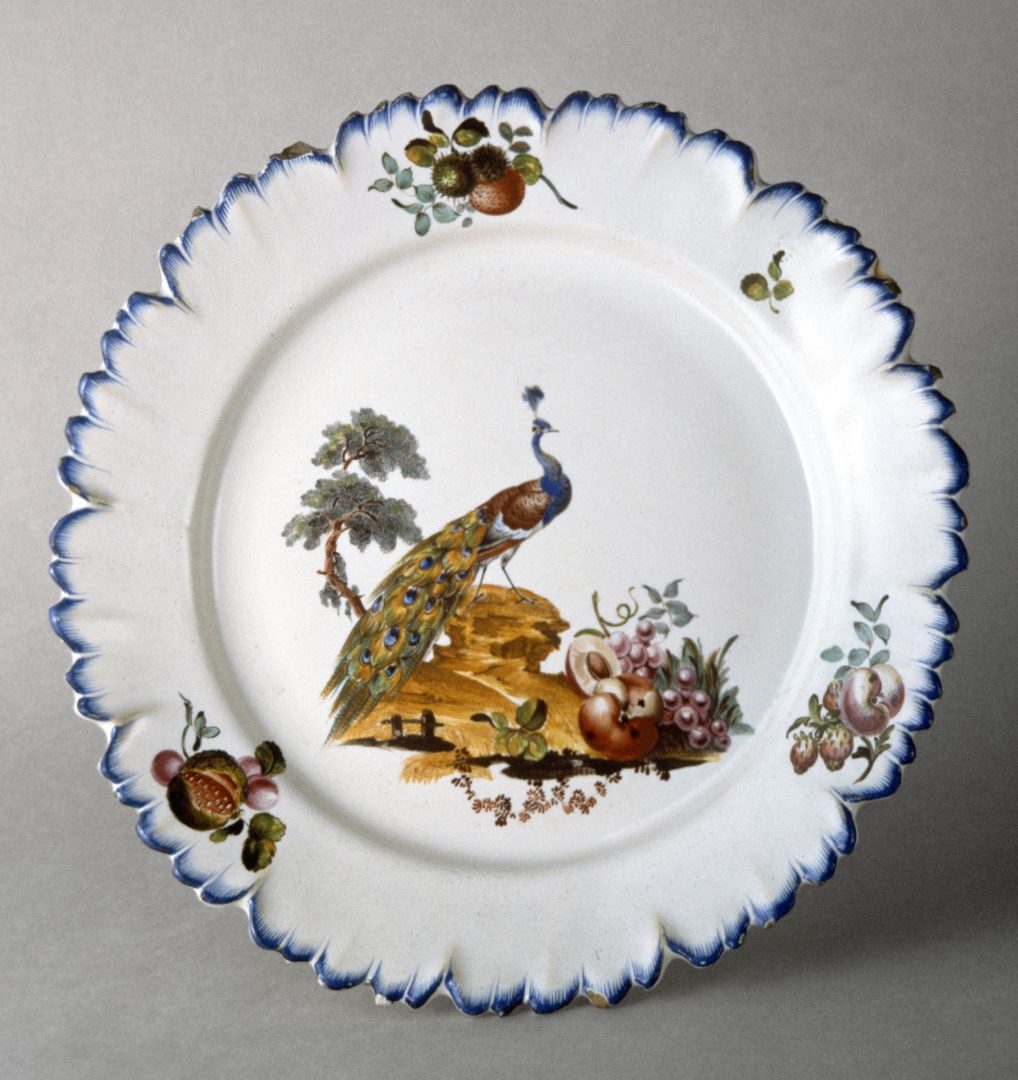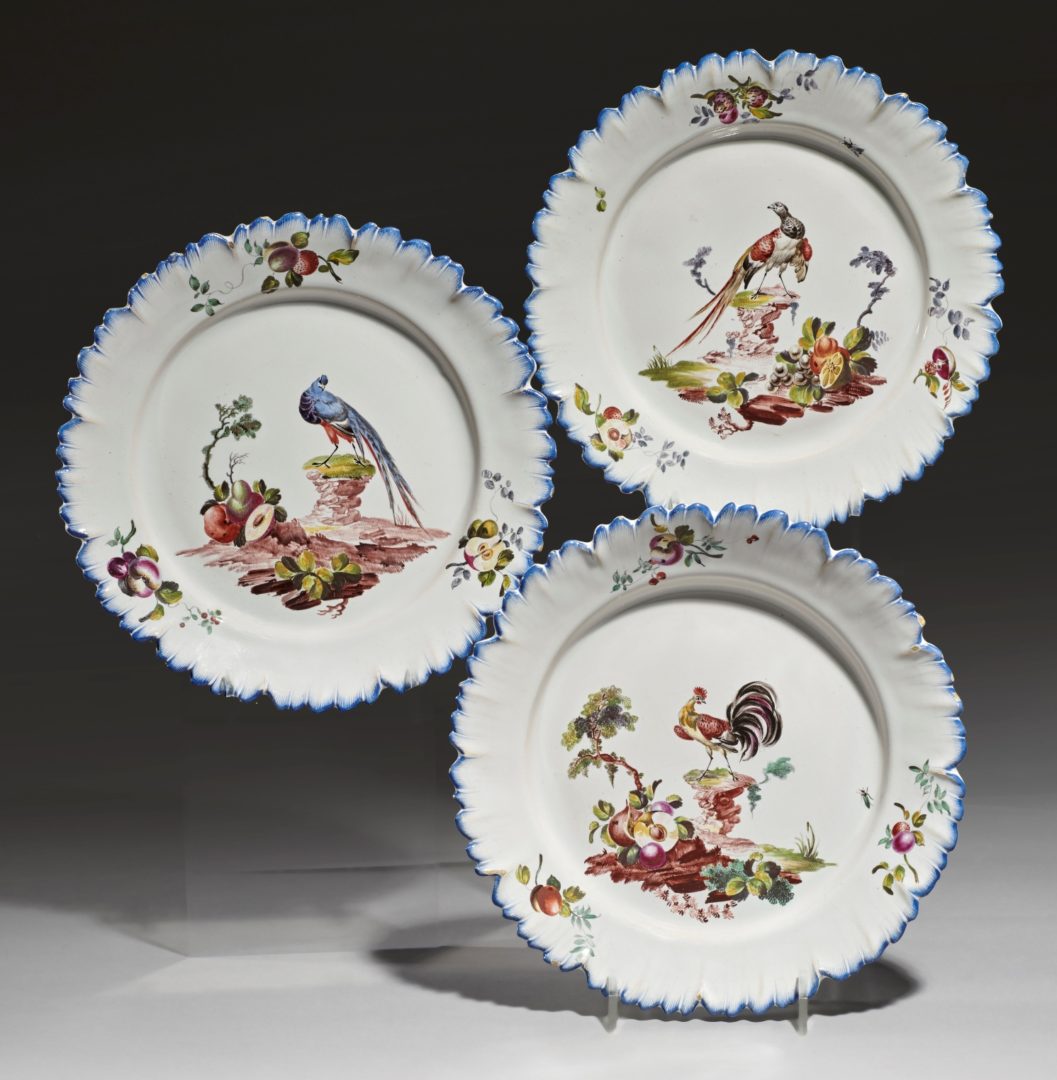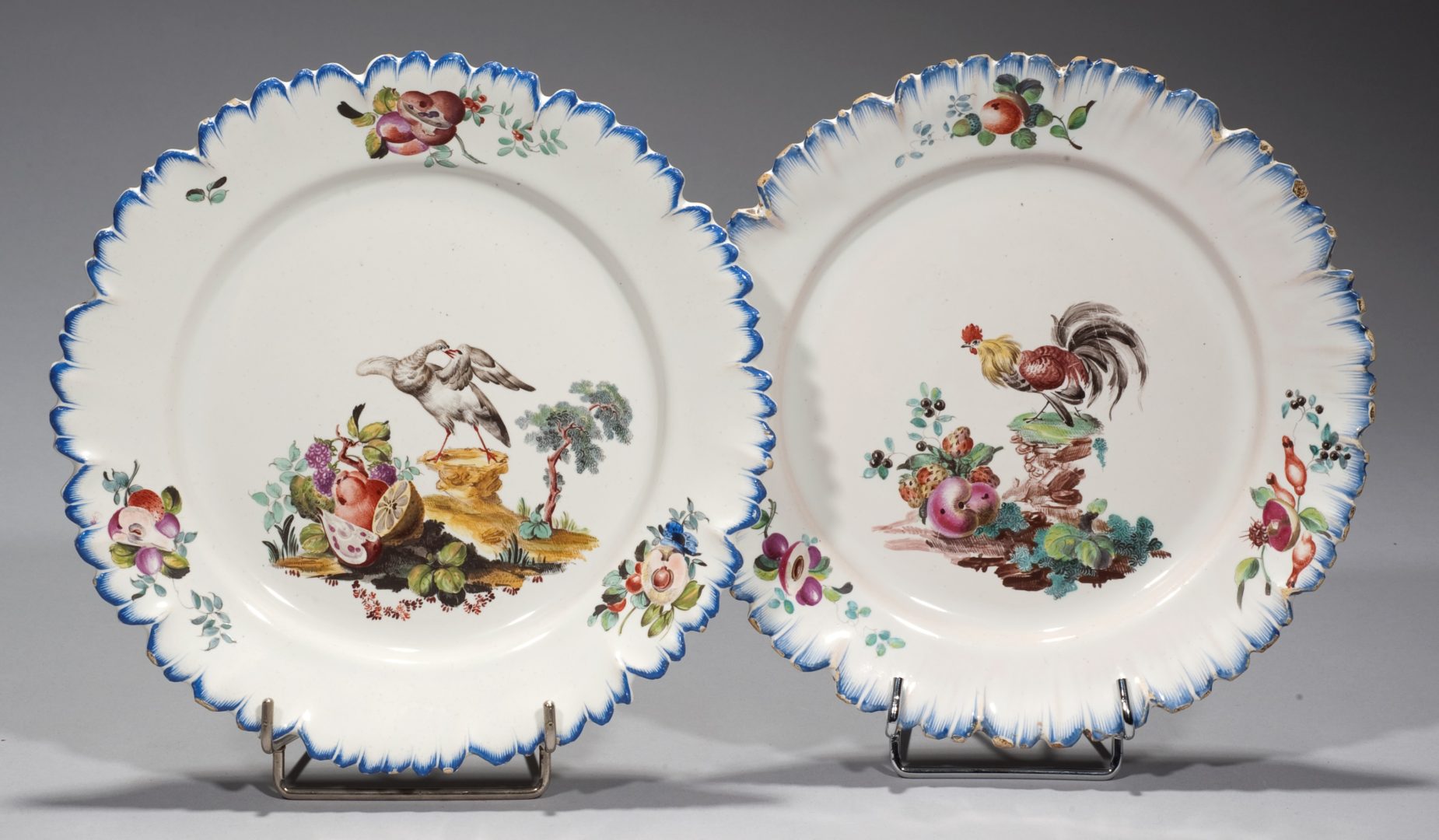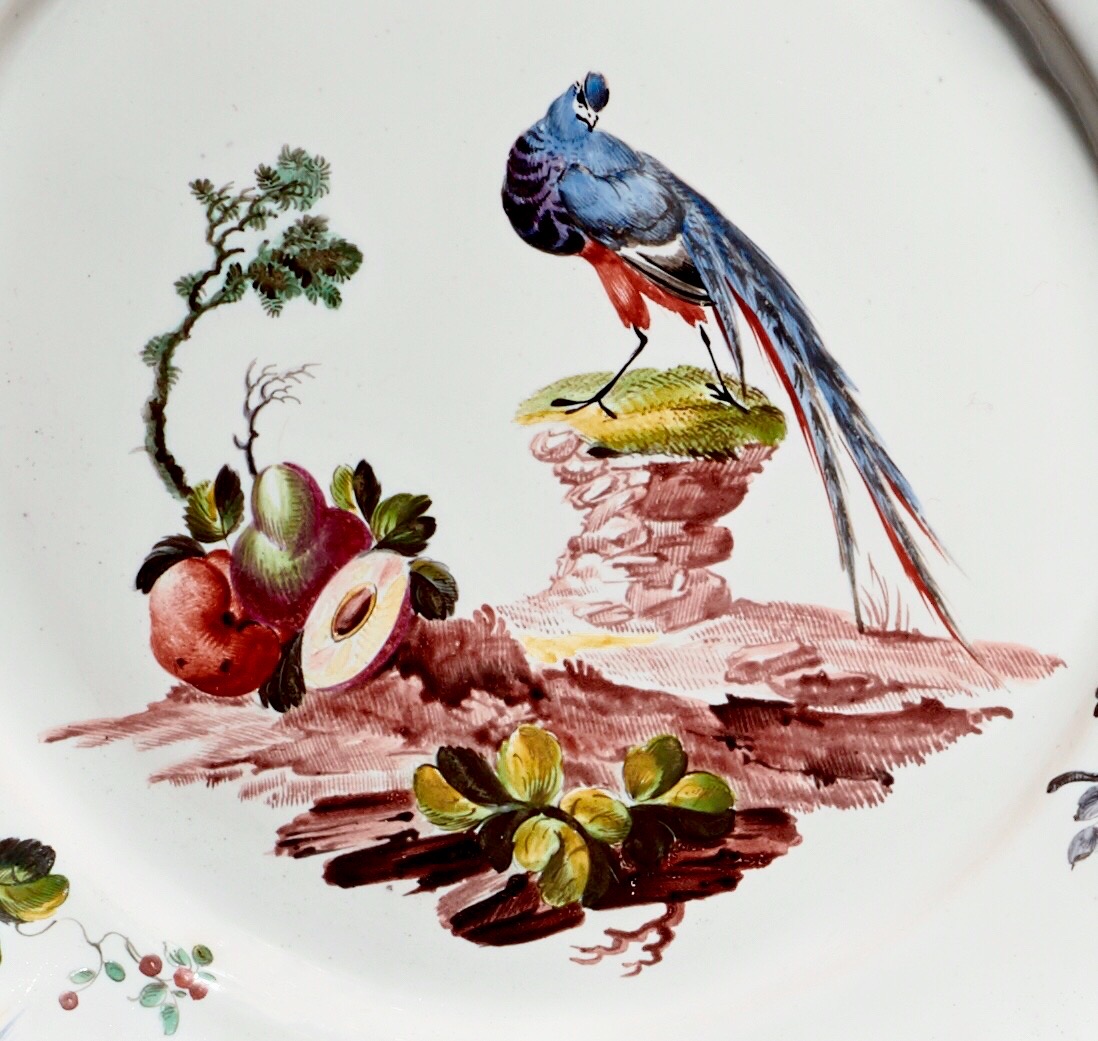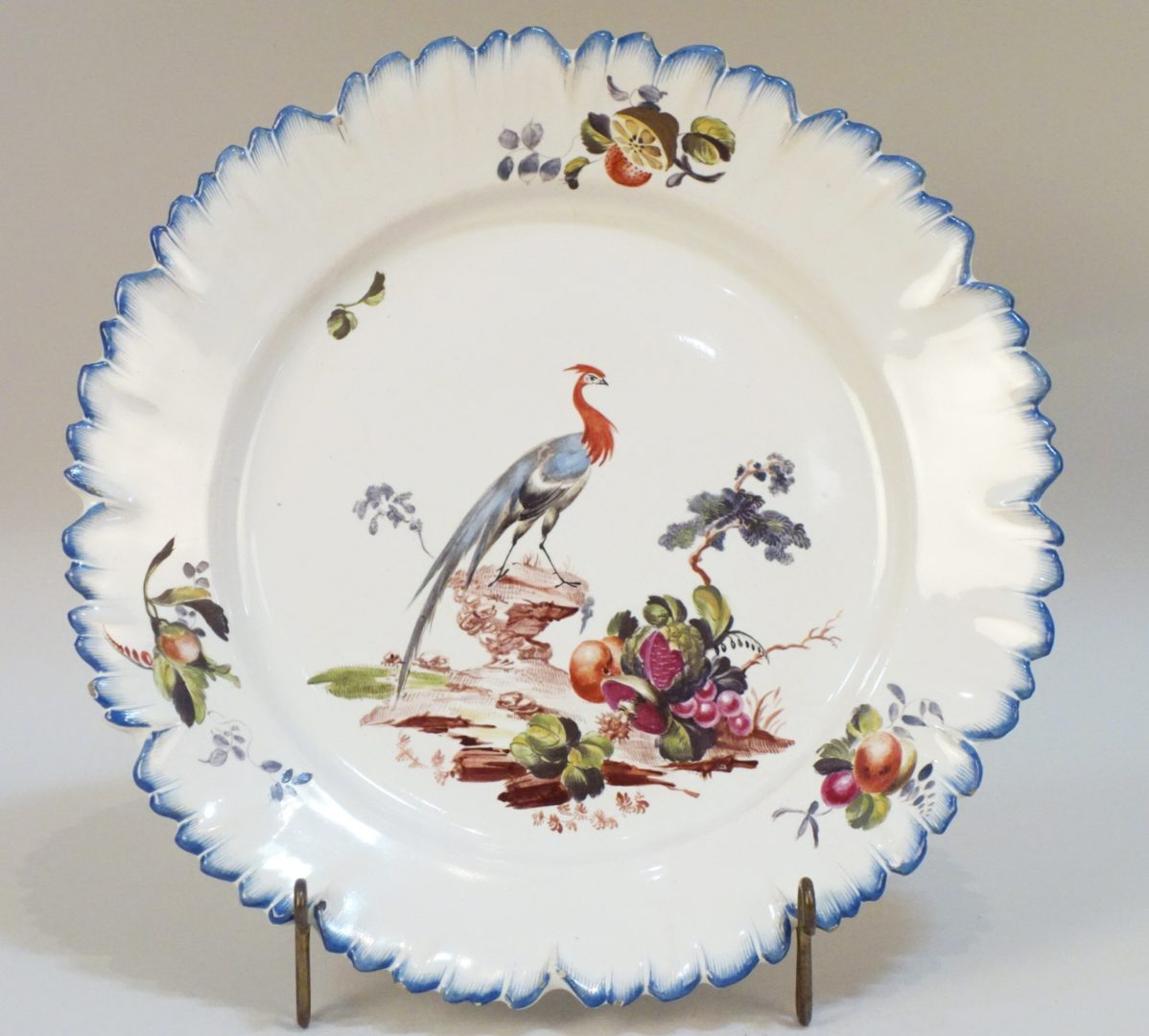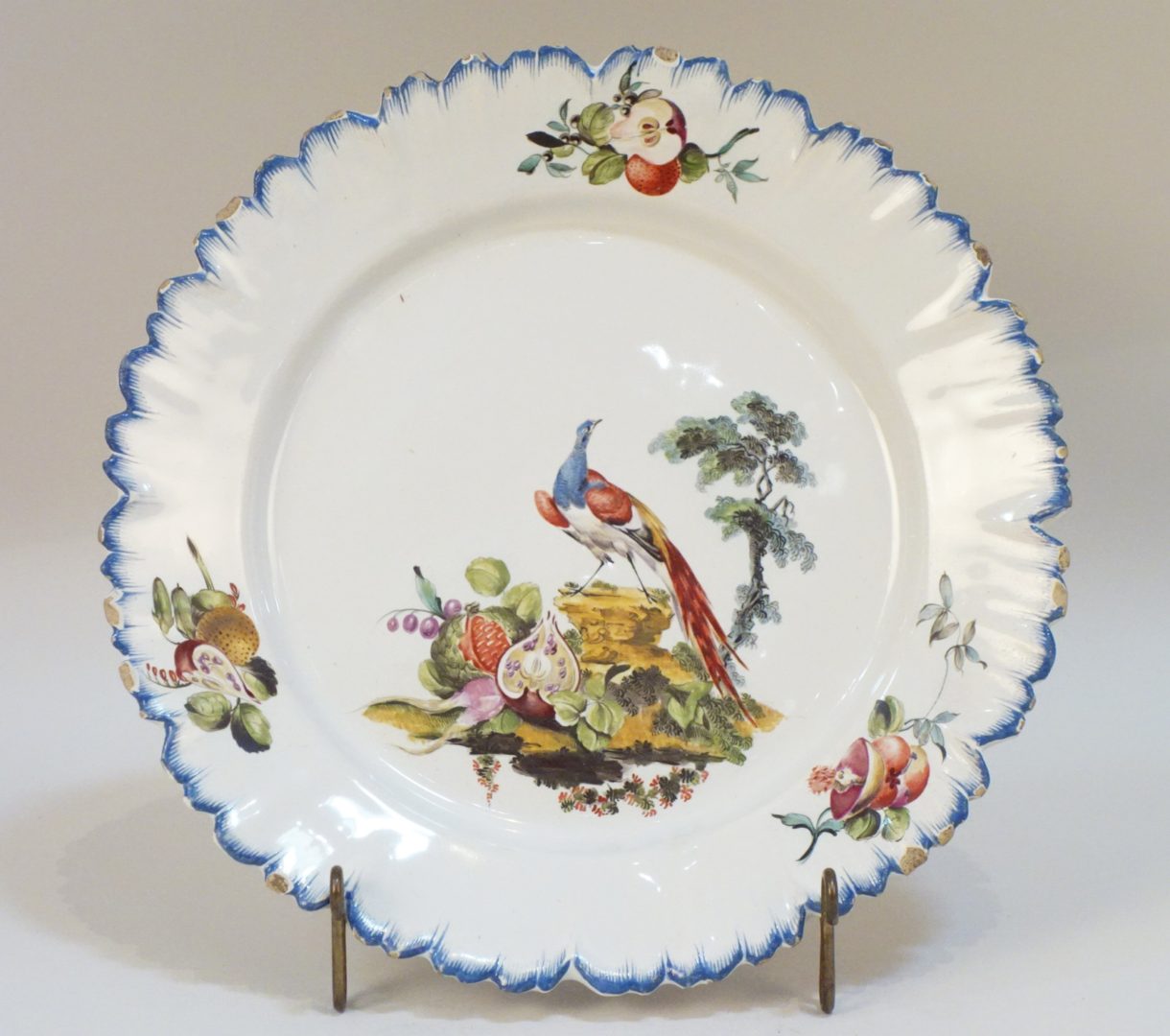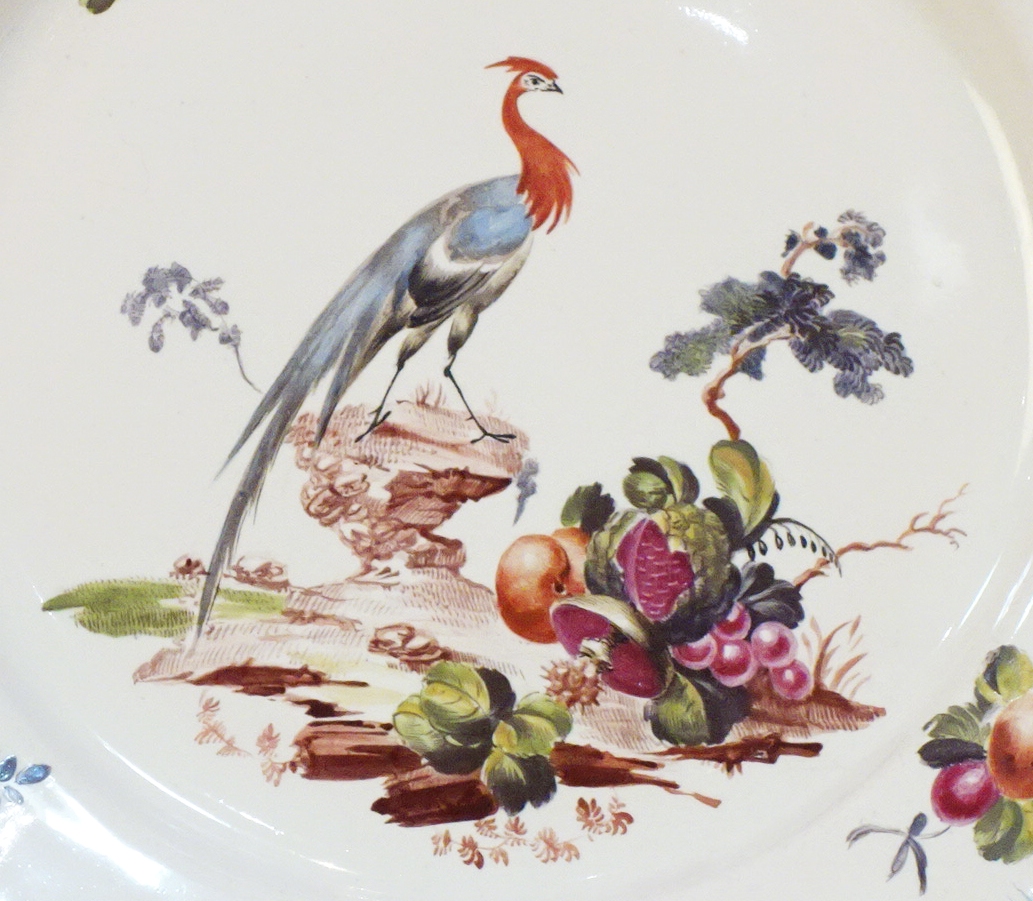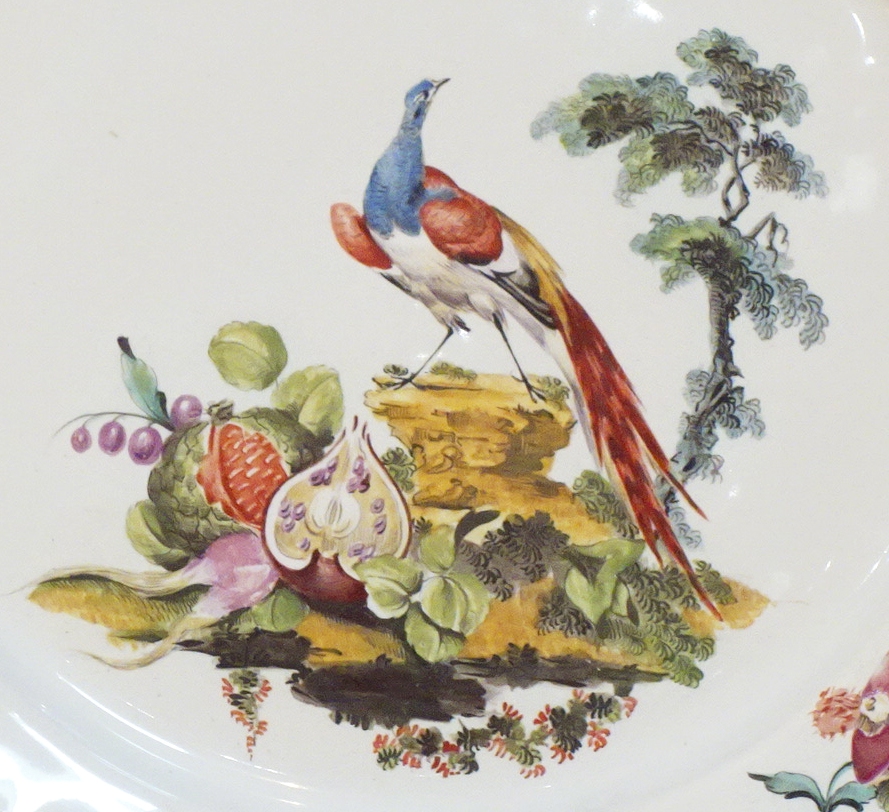1 A Sceaux faience plate, c.1766-68, with bird painting by Fidelle Duvivier. MNC 21039. Diameter 23.2 cm. Photo: RMN-Grand-Palais / Sèvres, Cité de la céramique / Martine Beck-Coppola
2, 3, 4 Three related Sceaux faience plates, c.1766-68, with bird painting by Duvivier that came up for auction in June 2018. Diameters 23.5 cm. © Bruno Simon / Pescheteau-Badin, Paris(i) Cf. 2a, 3a (details).
5, 6 Two Sceaux faience plates, c. 1766-68, with bird decoration and cut fruits
first identified as Duvivier’s work in In the Footsteps of Fidelle Duvivier (2016).
Diameter of both 24 cm. © PIASA Hôtel Drouot, Paris.
In French these faience plates are called assiettes à bord déchiqueté, referring to their notched or indented edges that are usually highlighted in blue with a fine “combed” pattern known as peignes bleus.(iii)
On all of the known pieces of this particular faience service Duvivier portrayed birds – primarily colorful pheasants, as well as a peacock, a swan, and two coqs (roosters). All are perched on small rocky plateaux, with cut or whole fruits lying nearby. He repeated many of these fruits coupés in his other Sceaux (and Mennecy) decorations, as can be seen among the examples in my book.
2a
7, 8 Two more Sceaux faience plates, c. 1766-68, with bird decoration and cut or whole fruits by Duvivier.
3a
(8) Diameter of both 23 cm. Photos: Hôtel des Ventes Victor Hugo, Dijon, France(iv) Cf. 7a, 8a (details)
The most striking bird here is the majestic peacock on the plate in the Musée de la Céramique in Sèvres (1). This bird bears a strong resemblance to one he painted on a small New Hall milk jug about twenty years later.(v) This similarity proved to be an extremely important clue that led me to search for more evidence of Duvivier’s feathered creations on Sceaux faience.
Owing to the fact that his name and reputation as a porcelain decorator in England are still virtually unknown in France, there can be little surprise that the auction house lot descriptions for these newest examples make no mention of Fidelle Duvivier. As in every country, it takes time for collectors, dealers and auction houses to become aware of current research findings and the corrections offered by current ceramic literature. Duvivier’s career and decorative oeuvre are now receiving more attention in the Netherlands, and hopefully his talents and contributions will be similarly acknowledged in France, the country of his birth.
7a
8a
NOTES
(i) From the auction Céramiques Européennes, June 18, 2018, Pescheteau-Badin, Paris, lots 89, 90, 91. The example with a rooster (4) had been auctioned in 2017 as lot 270 at Drouot Richelieu in Paris (SVV Guillaume Le Floch auction), and was featured in my blogpost #9 of August 27, 2017 (“A Rock with a View – a Tournai motif finds its way to Sceaux and Derby,” image 5).
(ii) See In the Footsteps of Fidelle Duvivier, pp. 20, 21.
(iii) For a detail photograph of the peignes bleus see blogpost #19 of November 30, 2018, image 7.
(iv) Auction of June 29, 2019, lot 167, Hôtel des Ventes Victor Hugo, Dijon, France.
(v) See Footsteps, pp. 21 (25), 53 (58), and blogpost #12 of January 16, 2018, which compares several of Duvivier’s peafowl on Sceaux and Mennecy wares, and lists a number of distinctive features by which one can identify his hand. https://chjacob-hanson.com/duviviers-peacocks-and-a-peahen/ Many of these features are also visible in the examples shown in this blogpost.

